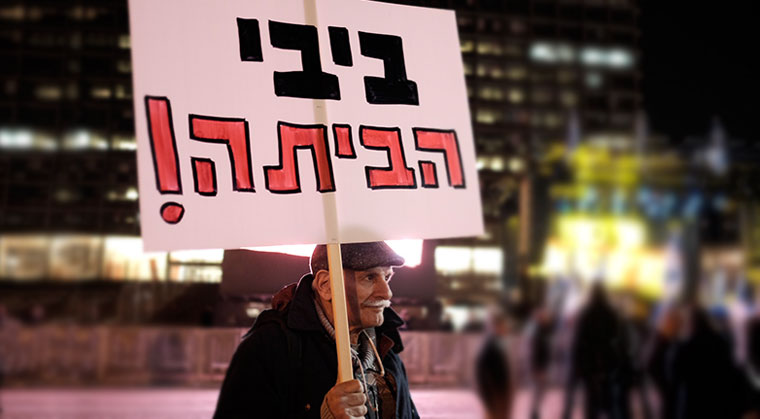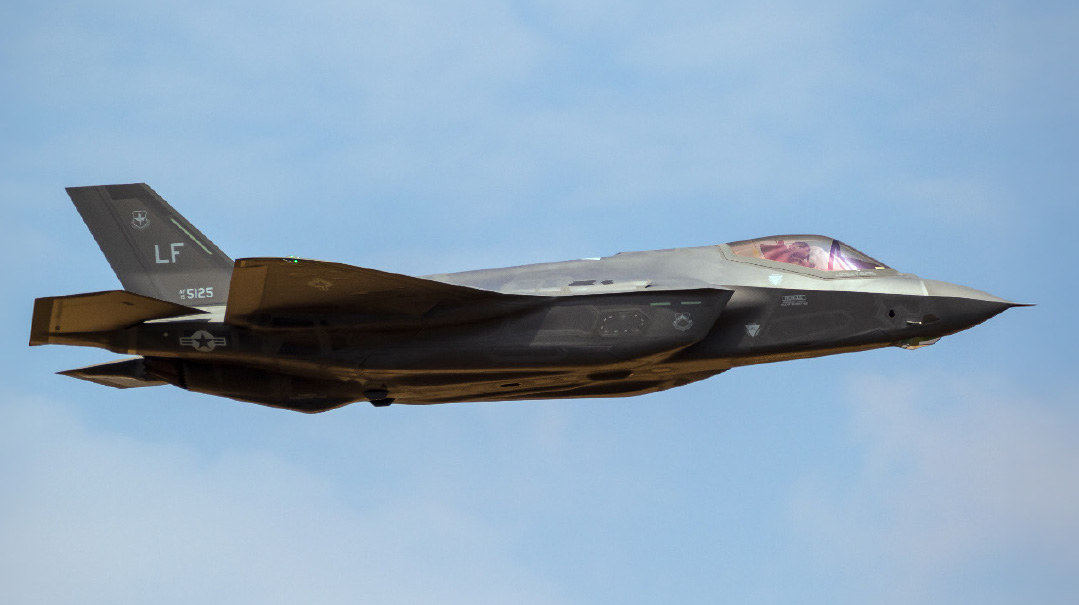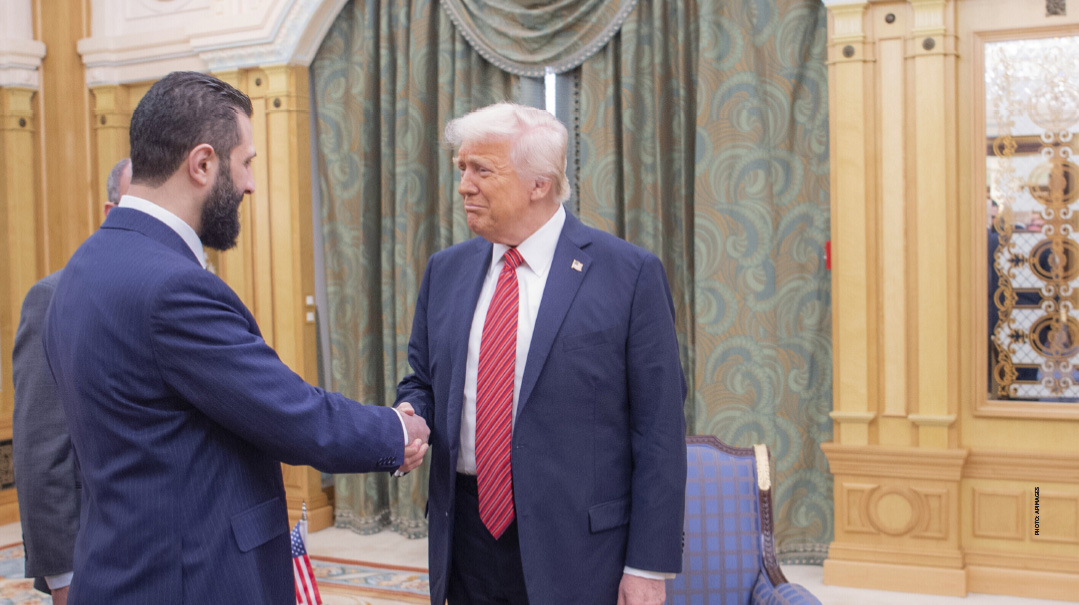Drowning Out the Noise

Kerry, Gabbay, and the tiny crowd in French Square suffer from similar political delusions

D
rowning Out the Noise
French Square, at the corner of King George and Ramban Streets, is a Jerusalem stomping ground for demonstrators. The triangular square is too tiny to accommodate a crowd, but it’s a great place to get your message across to pedestrians and passing drivers.
An hour after Havdalah this week, about ten people gathered. It wasn’t a late minyan for those who keep Rabbeinu Tam time; it was an anti-Netanyahu protest, with placards reading “Bibi Go Home” and “If You Love Israel, Separate from Netanyahu.”
The demonstrators exhibited little enthusiasm; not surprising, considering it was a day after Yisrael Hayom published a poll showing that in new elections, a Likud-led center-right-religious bloc would win 69 seats, up two from its current 67. The Zionist Union, which includes Labor, would crash from 24 to 13 seats, despite its new leader Avi Gabbay’s promise to make Labor great again.
The electorate’s brief honeymoon with Gabbay is on the rocks, as is his short-lived courtship of the center-right. Though he floated a trial balloon suggesting that Israel should keep settlements in Judea and Samaria in any peace deal with the Palestinian Authority, he failed to woo the center-right with this stance. Facing a rebellion from Labor’s hardcore left, Gabbay reversed course this past weekend, telling an audience in a Tel Aviv suburb that if negotiations with the Palestinians fail, Israel would have to withdraw from the territories unilaterally.
Gabbay did not explain what incentive remained for the Palestinians to negotiate after conceding in advance to all their territorial demands. John Kerry copped a similar attitude two weeks ago in London, telling a top aide of Mahmoud Abbas to hang tough because President Trump’s days in office are numbered.
Recent polls appear to reject Kerry’s projections and Gabbay’s strategy. A slew of new surveys released the same day as the Israeli poll showed a spike in President Trump’s approval ratings. According to a Rasmussen Reports survey, 49% of respondents approved of President Trump following his widely acclaimed State of the Union address.
It might be coincidental, but it’s probably not. Netanyahu and Trump share the same geopolitical ideology, their countries face the same enemies and security threats and the same strident voices from the left. Their center-right supporters are loyal, for now.
Kerry, Gabbay, and the tiny crowd in French Square, on the other hand, suffer from similar political delusions. Desperate to stay relevant, they cover up the deficiencies and failures of their shopworn policies by relentlessly hounding their political opponents.
What they have yet to internalize, and may never, is that they won’t succeed by waving placards, raising the white surrender flag, or encouraging intransigence.
political chess
Chareidim Fear a Rising Lapid
The Yisrael Hayom poll wasn’t all rosy, at least for the chareidi component of the center-right-religious bloc. While it did show United Torah Judaism (UTJ) gaining one seat, Shas dropped two of its seven, and Yesh Atid, led by archnemesis Yair Lapid, would become the Knesset’s second largest political party, gaining a whopping 13 seats, from 11 to 24.
Lapid’s rising political tide has been anecdotally tied to the wave of chareidi draft protests, which spilled over to main thoroughfares and disrupted traffic during peak commuting hours, as well as the controversial new measure known as the “supermarket law” designed to keep shops closed on Shabbos.
Chareidi MKs are often accused of legislative overreach, but by and large, aside from the occasional screaming episodes that characterize Knesset debates, they are sensitive to the wishes of the broader Israeli public. Lapid too has learned to mind his manners when it isn’t too costly for him politically: He recently supported a Shas candidate for the committee that appoints judges to Israel’s rabbinical courts. Lapid knows that if he entertains any dream of ever becoming prime minister, he will almost certainly need the chareidim to form a coalition.
Not that chareidi lawmakers want him: Most are on record saying they would never sit with Lapid. The final decision will be made by the gedolim with whom they consult, of course, but it’s a question they hope they will never have to ask.
When Israel and the US Argue
Foreign military exploitation — the overt or covert acquisition and analysis of military and civilian hardware and equipment, to learn more about the capabilities of an enemy — sometimes leads friends to compete.
The story of the Iraqi MiG-21 flown to Israel by a defecting pilot in 1966 (a plane that Israel later lent to the US for examination) is well known.
But a new dossier of declassified documents released last week by the National Security Archive, a project based at George Washington University, noted that a year later, after the Six Day War, Israel stalled a US request to send them components of a Soviet-made SA-2 surface-to-air missile.
“What the dossier appears to highlight is that the Israelis were rather coy about this cooperation and set conditions on it,” says Gideon Remez, a fellow of the Truman Institute, Hebrew University of Jerusalem, and co-author with Isabella Ginor of the recent book The Soviet-Israel War, 1967–1973.
Remez says military cooperation between the US and Israel first blossomed after the Six Day War, yet Israeli requests for the most advanced US weapons, especially F-4 Phantom jets, were repeatedly delayed under both the Johnson and Nixon administrations, sometimes as a tool of political pressure. “So it’s no surprise that Israel used access to its much-appreciated intelligence achievements, including Soviet-made booty, as a bargaining chip to speed up the process,” Remez said.
The story repeated itself in 1982. The IDF’s Lebanon invasion netted a booty of Soviet anti-aircraft missile systems, mines, and grenades. The US asked Israel to them across the Atlantic so the US could aid insurgencies it was supporting elsewhere in the world, but Israel instead called a news conference to display their stash, with the New York Times reporting that the pictures stimulated several foreign buyers to express interest. It seems from a second declassified memo that America’s initial efforts to acquire these weapons apparently were not completely successful, and this led to another request to the Israelis in 1984.
We don’t know the ultimate outcome, but we do know that more than 30 years later, US-Israel military cooperation has grown in leaps and bounds, and that disagreements of this nature among friendly nations do not derail long-term strategic goals.
(Originally featured in Mishpacha, Issue 697)
Oops! We could not locate your form.







